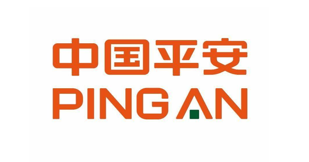中国平安2025年中期业绩发布会
文章语言:
简
繁
EN
Share
Minutes
原文
会议摘要
At the mid-year performance conference in 2025, Ping An of China reviewed the steady growth in operating performance in the first half of the year and expressed confidence in the development in the second half of the year. The company firmly adheres to regulatory requirements and product transformation, with the increase in agent income indicating strong business development. In terms of equity investment, Ping An adopts a conservative strategy, increasing the allocation of high-dividend value stocks and growth sectors. Management emphasized the important role of technology investment and AI application in reducing costs, increasing efficiency, and enhancing customer experience, and plans to increase investment in the AI field in the future. Leveraging its comprehensive financial and medical elderly care advantages, Ping An is committed to becoming a customer-centric comprehensive life service provider, driving continuous increase in the company's valuation. The conference elaborated on key financial data such as revenue, profit, net assets, as well as highlights in life insurance, property insurance, banking, and other business sectors, demonstrating the company's solid financial position and confidence in the future. Management also answered questions from the media about performance, dividends, stock prices, and technology applications, expressing a positive attitude towards market development and commitment to long-term shareholder returns.
会议速览
At the mid-year performance briefing in 2025, the management team introduced the company's operating performance and strategic progress in the first half of the year, with revenue reaching 500.1 billion, a 1% year-on-year increase. Faced with a volatile market environment, the company has made steady progress, demonstrating a clear strategy and strong execution capabilities. The meeting emphasized the deepening of the strategic integration of financial and medical elderly care services, as well as the work in building comprehensive accounts and laying out medical and elderly care services. The management team then answered questions from the media, focusing on strategic progress.
The difference between the operating profit growth of 3.7% and the negative growth of 8% in net profit was discussed, pointing out that the valuation fluctuations of Ping An Good Doctor and convertible bonds, as well as the fact that OCI capital gains are not included in the profit statement, are key factors. It is emphasized that although OCI capital gains are not directly reflected in the profit statement, they increase net assets, enhance competitiveness in dividend insurance, and are beneficial for long-term value. It is recommended to focus on operating profit as it more accurately reflects the company's operating capabilities.
The group's net assets reached 944 billion, a year-on-year increase of 1.7%, and increased by 4.8% after dividends. It plans to pay an interim dividend of 0.95 yuan per share, a year-on-year increase of 2.2%. The New Business Value (NBV) increased by 39.8% year-on-year, with double-digit growth for multiple consecutive quarters. The comprehensive investment rate of return is increasing by 3.1%, and the CII increased by 0.3% year-on-year. The composite cost ratio of property insurance is 95.2%, optimized by 2.6 percentage points, and technology is helping to control costs. The number of individual customers has reached 247 million, and the scale continues to expand.
Ping An Group's mid-term performance is stable, operating profit is increasing, dividend levels are rising, and the balance sheet is healthy. Strategic deepening is reflected in comprehensive finance and healthcare for the elderly, with an increase in customer numbers and retention rates, and a significant contribution to the medical ecosystem. In life insurance and health insurance business, both bancassurance and agent channels are growing steadily, and the transformation to multiple channels is effective. The comprehensive cost ratio of property insurance is optimized, and underwriting profit has significantly increased. Bank profits are narrowing, but the overall performance of the group in the second quarter is good.
The group's profit in the first half of the year increased by 3.7%, with life insurance and health insurance business contributing to a 2.5% growth, and investment services performance increasing by 24.3%. Asset management and financial energy businesses also achieved growth of 110% and 170% respectively. Contract services' CSM steadily grew by 0.3%, laying the foundation for future profit release.
The dialogue detailed the breakdown of investment returns for insurance companies, including the overall investment yield in the short and medium term, emphasizing the stability of asset allocation. Fixed income assets serve as the foundation, with long duration high-yield bonds providing stable income; in equity assets, high-dividend low-volatility stocks are used to enhance the balance sheet; alternative allocations are secure and stable, with small exposure to real estate and mostly stable rental income sources. Overall, it demonstrates the insurance company's long-term investment and asset allocation strategy.
The dialogue detailed Ping An Group's robust strategies and achievements in capital management, solvency, and shareholder returns. The group maintained stable growth in net assets during the golden development period of life insurance, achieving a 1.7% growth in net assets after dividends in the first half of the year. The group's core solvency ratio far exceeds regulatory requirements, and the comprehensive solvency ratio is healthy, laying a solid foundation for business development and stable dividends. In addition, the group has ranked first in the insurance sector MICIESG ratings for three consecutive years and has been selected for the Fortune Global 500 for 15 consecutive years. Since going public, Ping An has paid out over 400 billion in dividends, with dividends increasing continuously for the past ten years. Future profit sustainability is attributed to sound management and the construction of a medical and elderly care ecosystem.
The dialogue revolves around the factors contributing to the growth in the value of life insurance new business and the confidence in the full-year development. It is pointed out that growth comes from industry trends and the reform dividends of the company, including multi-channel strategies, product and service enhancements, and technological empowerment. Despite fluctuations in agent activity and income in the short term, a significant improvement has been seen in the second quarter, and the company is confident in the continuous and stable development of its business for the full year.
Ping An Group's performance in the first half of the year was stable, with strong growth in its core business and continuous innovation driving forward. Dividends are linked to long-term operating profits, with total dividends exceeding 400 billion. The management is confident in the market policies and will moderately increase equity allocation, focusing on the growth sector of new intelligent production and high-dividend value stocks.
Ping An Group emphasizes a comprehensive AI strategy, leveraging self-developed large models and intelligent body applications to gain competitive advantage in vertical fields, effectively reduce costs, and enhance efficiency. Management indicates that they will increase investment in AI technology, optimize their 5G strategy, and plan to increase the allocation ratio of stocks in equity assets.
Ping An Group's investment strategy focuses on asset-liability matching, increasing returns through optimizing asset allocation, and focusing on companies with reliable operations, promising growth, and sustainable dividends. Valuation drivers for the group include synergies between comprehensive finance and healthcare and pension businesses, as well as AI empowerment, aiming to provide one-stop financial services. In addition, Ping An Securities' private equity fund has been approved and is in the process of registration, aiming to participate in the market as a long-term value capital. The group emphasizes that its stakeholding behavior is just a normal investment operation with no hostile takeover intentions, and calls on the media to interpret it correctly.
要点回答
Q:Who are the members of the management team present at the Shanghai venue during the press conference?
A:The management team attending the press conference at the Shanghai venue includes Mr. Xie Yonglin, General Manager and Co-Chief Executive Officer, and Ms. Fu Xin, Deputy General Manager and Chief Financial Officer.
Q:Who will give the opening introduction at the performance release conference?
A:The press conference began with an overview of the mid-term performance in 2025 by the general manager of Fuxin.
Q:What is Ping An's core operating philosophy at the performance release conference in China?
A:Ping An of China is committed to becoming a global leader in comprehensive financial, medical, and elderly care services, with the business philosophy of "professionalism, making life simpler" and the customer service concept of providing comprehensive solutions throughout the entire life cycle.
Q:What progress has Ping An made in terms of strategic execution and implementation in the first half of this year in China?
A:In the first half of this year, Ping An of China continued to deepen its strategy, and made a lot of efforts in areas such as integrated account construction, as well as deepening layout in medical care and elderly care.
Q:How is the business performance in the first half of the year?
A:In the first half of the year, Ping An made steady progress, operated steadily, and achieved revenue of 500.1 billion, an increase of 1%. The net operating profit attributable to the parent company also increased by 3.7%.
Q:Net profit decreased by more than 8%, but operating profit increased by 3.7%. What are the differences and reasons between the two?
A:This difference is mainly caused by three one-off factors: first, the negative impact of 3.4 billion yuan brought by Ping An Good Doctor's impairment, which reduced the growth rate by 4.6 percentage points; second, the short-term valuation decrease in accounting treatment due to the increase in stock price of CB (Convertible Bonds) issued in the past year, but it does not affect the financial statements after conversion; third, capital gains generated from stock allocation are not included in the profit and loss statement, with a profit of 6 billion yuan, although not reflected in the profit, it has increased the company's net assets and is beneficial for the sales and dividend level of dividend insurance.
Q:If these one-time factors are taken into consideration, how does Ping An's net profit growth look?
A:If the one-time factors are excluded, Ping An's net profit achieved a significant double-digit growth rate exceeding the industry average, exceeding the growth rate of operating profit.
Q:What is the net asset and dividend situation of Ping An Group?
A:In the first half of the year, Ping An Group's net assets reached 944 billion, a year-on-year increase of 1.7%. It distributed over 29 billion in dividends, and taking into account the net asset growth before dividends, it increased by 4.8%. At the same time, it plans to distribute a mid-year dividend of 0.95 yuan per share, a year-on-year increase of 2.2%.
Q:Regarding the New Business Value (NBV) and overall return on investment, how does Ping An perform?
A:The new business value (NBV) increased by a significant 39.8% year-on-year, nearly reaching 40%; the comprehensive investment return rate is 3.1%, an increase of 0.3 percentage points year-on-year.
Q:In terms of property and casualty insurance, how does Ping An's combined operating ratio (COR) perform, and what factors contribute to this performance?
A:Our comprehensive property insurance cost ratio reached 95.2, an improvement of 2.6 percentage points compared to last year, placing us at a leading position in the global insurance industry. This achievement is mainly due to effective control of expenses and claims, with technology and AI playing a crucial role, making significant contributions to the optimization and improvement of the overall cost ratio.
Q:What are the key points and highlights of Ping An's business performance in the first half of the year?
A:In the first half of the year, our business performance was mainly stable, with operating profit at a positive 3.7 and showing a continuous growth trend. The level of dividends steadily increased, with net assets at 4.8 before dividends and 1.7 after dividends, and the balance sheet remained stable. In terms of customer scale, the number of individual customers increased by 247 million year-on-year, and the customer retention rate was close to 98%, especially for customers holding four or more products, reflecting the high recognition of our Ping An products and services, as well as our comprehensive financial model.
Q:What specific progress has been made in deepening strategic development in peace?
A:The deepening of our strategy is reflected in the continuous deepening of our comprehensive layout in finance and medical care for the elderly. In terms of comprehensive finance, the customer base has grown to 247 million, an increase of over 1% compared to the previous year, and the customer retention rate remains high, especially with a customer retention rate of nearly 98% for those holding multiple products. In the field of medical care for the elderly, we have achieved full coverage of the top 100 hospitals and tertiary hospitals, greatly enhancing the possibility for customers to enjoy convenient services that save time and money. Over 70% of new life insurance sales (NBB) come from customers who benefit from medical ecosystem services, highlighting the service capabilities and customer stickiness of the medical ecosystem.
Q:What are the key business situations and developments in life insurance and health insurance in the first half of the year?
A:In the life insurance and health insurance business sectors, the NBB of life insurance has grown by nearly 40%, maintaining double-digit NBE growth for more than ten consecutive quarters. The increase in growth rate is mainly attributed to the nearly 170% growth in the bank and insurance channel, as well as the continuous double-digit growth in NBEV in the agent channel, and the continuous improvement in agent productivity. In addition, the proportion of non-agent channels has exceeded 35%, achieving multi-channel transformation, making future growth more stable and effective.
Q:How is the performance of property insurance business, and what are the reasons for its optimization?
A:In terms of property insurance business, the comprehensive cost ratio (COR) has reached an excellent level of over 95, and through the application of technology and AI to optimize underwriting, claims, and loss assessment processes, as well as accurately identify and serve customers, continuous optimization has been achieved. The market share of car insurance has maintained a double advantage for four consecutive years, with underwriting profits growing by more than 125%, proving that the business quality of the property insurance sector is good and the operation is stable.
Q:In terms of investment returns, how does Ping An Insurance perform in the short-term and long-term? What is the asset allocation situation of Ping An Insurance's investment portfolio?
A:Ping An Insurance, in terms of investment returns, in the short term, the comprehensive investment return rate reaches 3.1% non-annualized, with a growth of 0.3%. And in the long term, its rolling ten-year average investment return rate exceeds 5%, significantly higher than the assumed return rate of actuarial intrinsic value and operating profit, demonstrating the robustness of Ping An's investment and asset allocation. Ping An Insurance's investable assets have grown to 6.2 trillion, an increase of over 8% from the beginning of the year, mainly composed of fixed income, equities, and alternative assets. Among them, fixed income assets are the cornerstone, with a large allocation of long-duration high-yield bonds to bring stable investment returns in the future; in equity assets, a high dividend, low volatility strategy has been adopted to provide stable returns in relatively low interest rate and volatile environments, and in the first half of the year, stocks with high dividend and good fundamentals were added, which have a positive impact on net profit and operating profit; alternative assets ensure the stability and safety of overall investments.
Q:How is the exposure of Ping An Insurance in real estate investment?
A:Ping An Insurance's real estate investment exposure is only slightly over 3%, with over 82% of it being properties that can provide stable rental income. These assets are secure and have a consistent cash flow income, and the accounting measurement methods are also very conservative.
Q:What are Ping An Insurance's strategies in capital management and shareholder returns?
A:Ping An Insurance focuses on comprehensive consideration of business development, shareholder return and solvency level in capital management. In the first half of the year, despite paying dividends, net assets continued to grow steadily, and a future capital plan was formulated based on business development and shareholder return requirements. At the same time, after injecting 20 billion into life insurance, Ping An's available funds remained in a healthy state of over 60 billion, indicating sound capital management with ample cash reserves.
Q:How is the solvency status of Ping An Insurance?
A:Ping An Insurance Group's core solvency and comprehensive solvency for property insurance are both more than three times higher than the regulatory requirements, demonstrating stability and laying a solid foundation for future business development and stable dividends.
Q:How does Ping An Insurance perform in terms of creating social value and receiving honors? How does Ping An Insurance perform in terms of shareholder returns?
A:As a responsible large financial group, Ping An Insurance has ranked first in the insurance sector for three consecutive years in the MICIESG ratings, receiving a double A rating, demonstrating recognition from both society and professional institutions. In addition, Ping An has continued to rise in the Global 500 rankings and has been included in the Fortune Global 500 for 15 consecutive years, showing high recognition from shareholders, customers, and society for its value creation. Ping An Insurance plans to distribute a midterm dividend of 0.95 yuan, a year-on-year increase of 2.2%, and has cumulatively paid out over 400 billion since its listing, with dividends increasing continuously over the past decade. Ping An's achievements stem from confidence in stable operations and sustainable future profit growth, as well as key driving factors such as life insurance NBV, property insurance quality, and prudent investments. Meanwhile, the construction of a medical and elderly care ecosystem will become an important moat for future profit release and differentiation capabilities.
Q:The new business value of life insurance and health insurance in the second quarter increased year-on-year compared to the first quarter. What are the factors behind this? Is it possible to maintain a growth rate of 48% in the first half of the year for the whole year?
A:The growth rate of new business value of life insurance and health insurance in the second quarter is higher than that in the first quarter, with growth momentum mainly coming from two aspects. Firstly, industry trends are key, with China's life insurance industry entering a golden development period in the current low interest rate environment, becoming an important cornerstone for wealth allocation for the middle class and above, providing triple value (wealth preservation and appreciation, family protection, and value-added services for medical health and elderly care) that meets customer needs, and benefiting from the huge potential of the silver economy track. Secondly, the internal reform dividend of the company is also continuously being released, including multi-channel strategies, product and service enhancements, and technology empowerment such as AI. Despite fluctuations in the activity and income of agents in the first half of the year, there has been a significant improvement in the second quarter, and the company is confident in the full-year business development.
Q:Regarding dividends and stock prices, the recent performance of the stock price has been strong, and the mid-term dividends are also considerable. However, what is the likelihood of an increase in year-end dividends?
A:Regarding the absolute amount increase opportunity of year-end dividends, although the recent mid-year dividends have increased and are not conservative, there is uncertainty on whether the year-end dividends can continue to increase significantly. However, the company is confident in achieving healthy and stable business development by leveraging industry trends and the release of internal reform dividends, thereby creating satisfactory returns for shareholders.
Q:What is the management's evaluation of the business performance in the first half of this year? In terms of continuous innovation, what initiatives does Ping An Group have?
A:The management expressed satisfaction with the business performance in the first half of this year. Overall, the group's performance is stable, with strong growth in core business and continuous promotion of innovation. Specifically, operating income, operating profit, and dividends have seen stable growth, strategic progress is orderly, and various indicators of comprehensive financial services have shown significant growth. In particular, the medical and elderly care strategy has significantly empowered the core business. From the perspective of property and casualty insurance, the combined ratio has improved, underwriting profit has doubled, new energy vehicle insurance premium income has increased by 46%, and investment performance is also quite good with a non-annualized comprehensive return rate of 3.1%. Ping An Group leverages technology to empower operations. On one hand, it improves operational processes, enhances quality, increases efficiency, and reduces costs through technology. For example, in car insurance, technology has helped reduce operating costs by one percent over three years. On the other hand, technology has strongly driven continuous innovation in the core business, such as launching "insurance + service" solutions for elderly care, medical care, etc. and using AI to create a series of medical products, providing a streamlined service experience.
Q:How to achieve strong growth in the group's core business?
A:The growth of the group's main business is mainly attributed to the balanced development of multiple channels, with significant growth in the banking and insurance, as well as community financial channels. At the same time, in the field of car insurance, through technological empowerment, the operating costs have been reduced by 1 percentage point over three years, effectively improving pricing capabilities and overall efficiency, leading to a significant increase in profits for the company.
Q:What are the plans for investment strategy and equity asset allocation for the second half of the year?
A:In the second half of the year, Ping An Group will increase its allocation of equity assets in two directions: the growth sector of new intelligent production capacity and high-dividend value stocks. Currently, the valuation level of the Chinese market is reasonable and has a safety margin, so the company is confident about the future market. At the same time, the company will adjust its equity allocation according to policy guidance and market changes, and adhere to the concept of long-term value investment.
Q:What are the key developments in AI technology innovation in the first half of the year and the focus of investment in the second half of the year for the management?
A:Ping An Group continues to invest in AI technology and is committed to comprehensive digital transformation. It has built four core elements including computing power, data, algorithms, and scenarios. In terms of strategic thinking, Ping An adopts a "comprehensive AI" strategy, focusing on intelligent marketing, service, operations, management, and business, planning to integrate AI throughout the entire value chain. In terms of investment scale for the second half of the year, Ping An will increase its allocation in equity assets based on the above strategic priorities, particularly in growth sectors and high-dividend value stocks.
Q:Where does the advantage of peace lie?
A:The advantage of Ping An lies in its expertise in the vertical domain, especially in areas such as underwriting, pricing, claims processing, operations, management, and other medical eldercare vertical fields. We have self-developed large models and massive exclusive databases, which give us a strong competitive advantage in the vertical domain.
Q:What progress has Ping An made this year in which areas?
A:This year, we have reduced costs in car insurance by 1 percentage point through the application of intelligent systems and digitized employees. In addition, 14 new self-developed large models have been added, reaching a total of 67, and intelligent systems are widely used throughout the group, with over 20% of employees using them to handle daily tasks.
Q:What are the expectations for the future peace and security in terms of investment in AI technology?
A:We believe that with continuous investment and innovation in AI technology, significant benefits will be generated in areas such as 5G, not only enhancing customer experience but also achieving remarkable results in reducing costs, increasing efficiency, empowering frontline AI, and improving the productivity of sales teams.
Q:What is the reason for the establishment of Ping An's listed companies H shares and private equity funds, and what is the progress? What are the valuation driving factors after Ping An's market value exceeded 1 trillion?
A:The listed peer company H shares have a core investment strategy based on asset liability matching. At the same time, a private equity fund established in the first half of the year is undergoing registration and filing with the China Securities Investment Fund Association, which is a pilot project for the reform of long-term investment by insurance funds. Future valuation drivers for Ping An include, but are not limited to, comprehensive finance, medical, elderly care, and technology development space. Our investment strategy follows the three principles of reliability, growth prospects, and sustainable dividends. We continuously optimize asset allocation, reduce debt costs, and enhance overall competitiveness through continuous investment and innovation in the AI field.
Q:How does Ping An view the concept of "Master Brand"?
A:We understand that the term "principal card" can be easily misunderstood. In fact, when we hold a certain percentage of shares in various capital markets or stock exchanges, we disclose information in accordance with regulatory requirements to maintain the stability of the Chinese capital market and for the consideration of long-term value investment, not for any other purpose. We hope to invest in quality companies and share in their development dividends together.

PING AN
Follow





